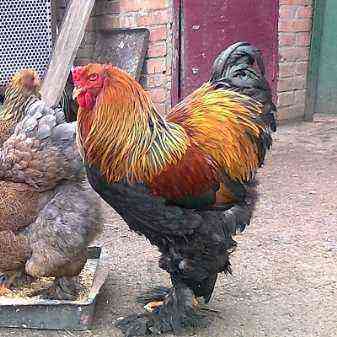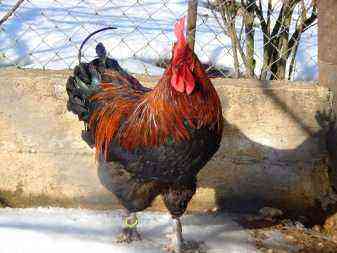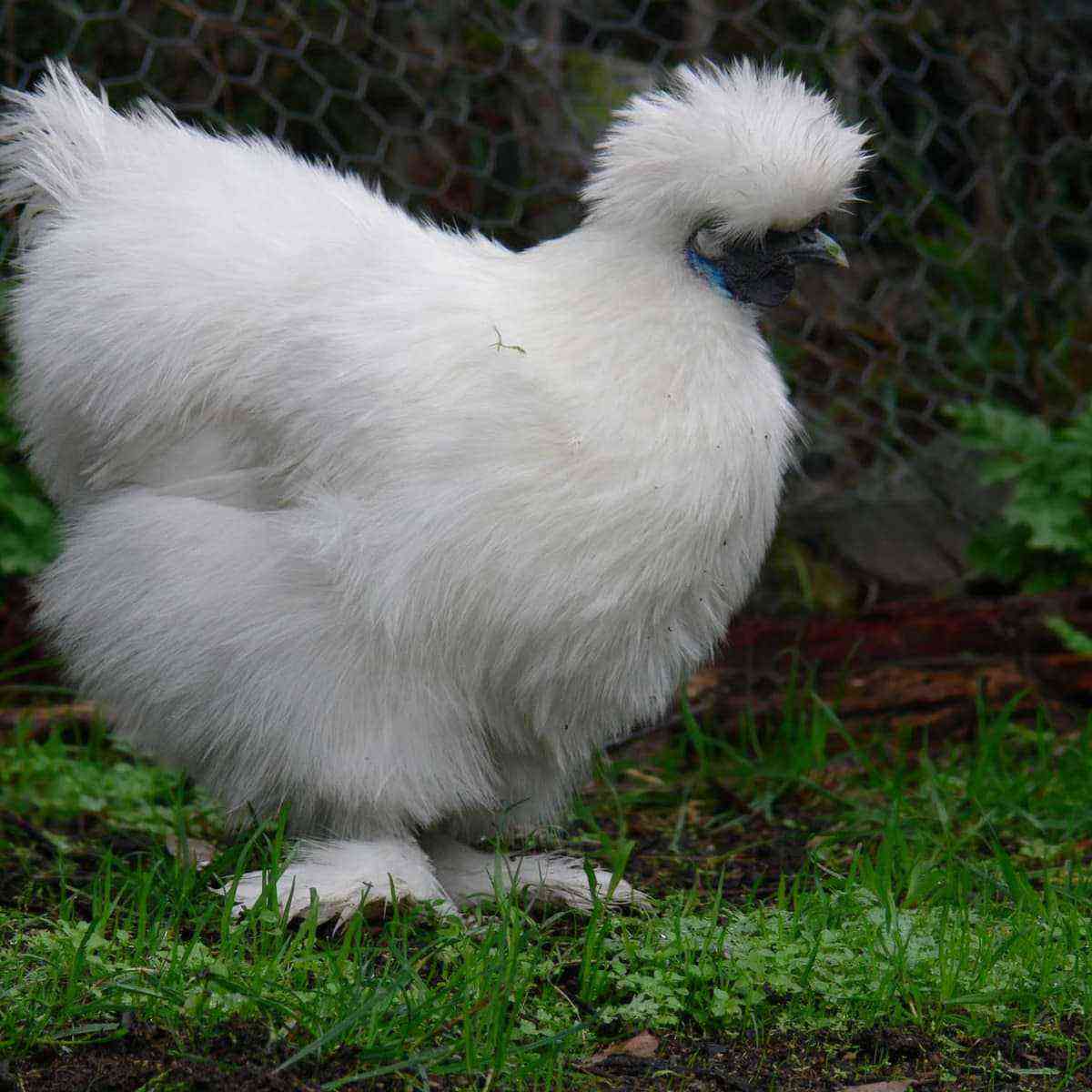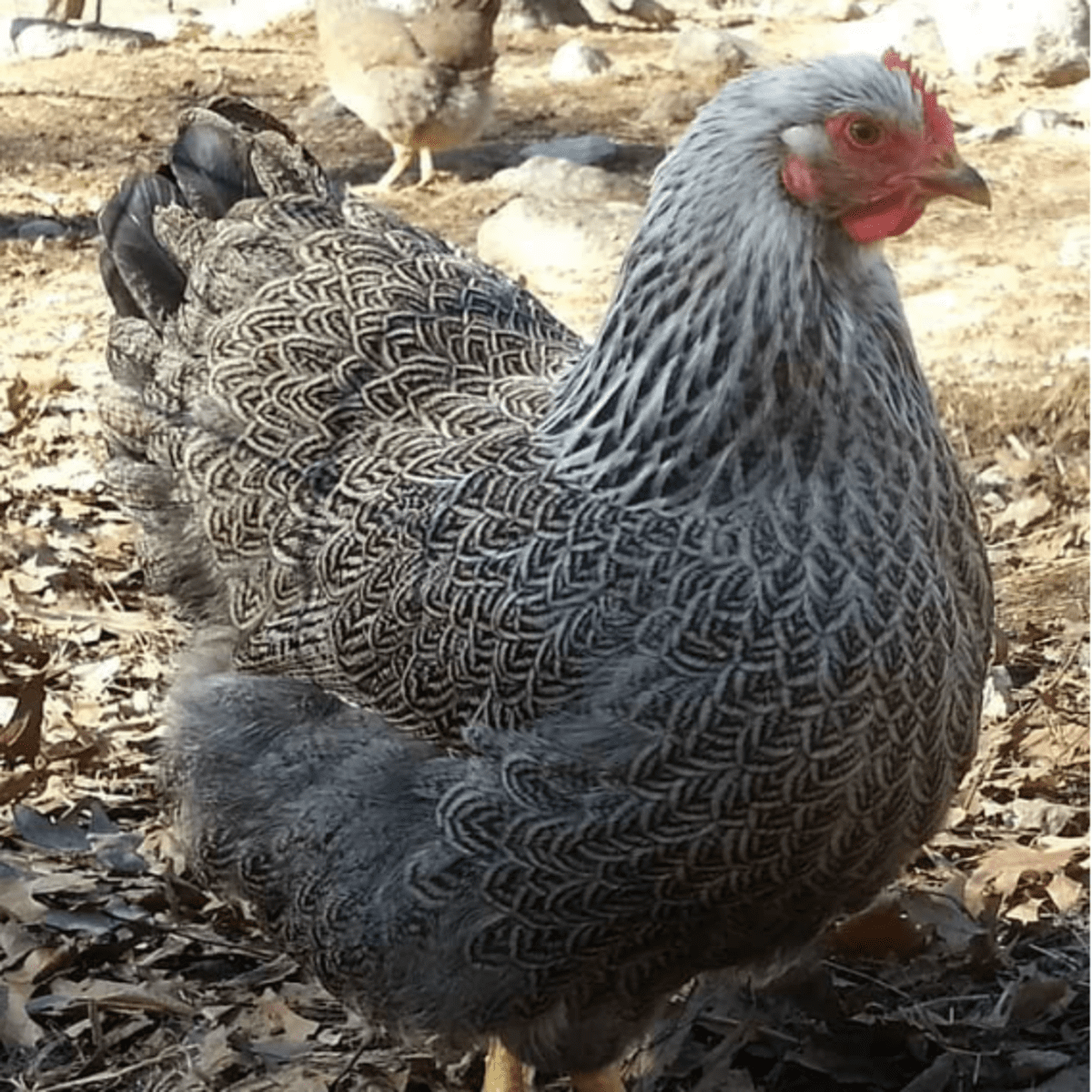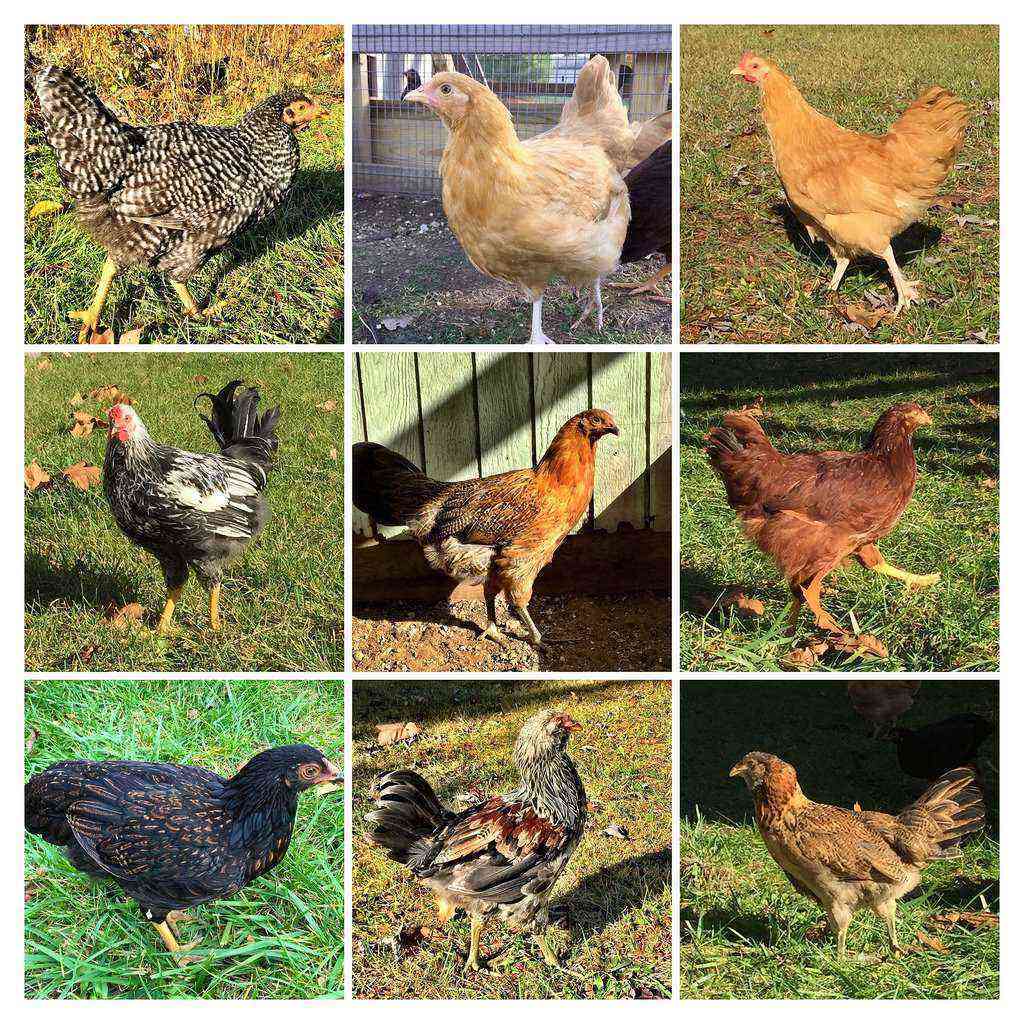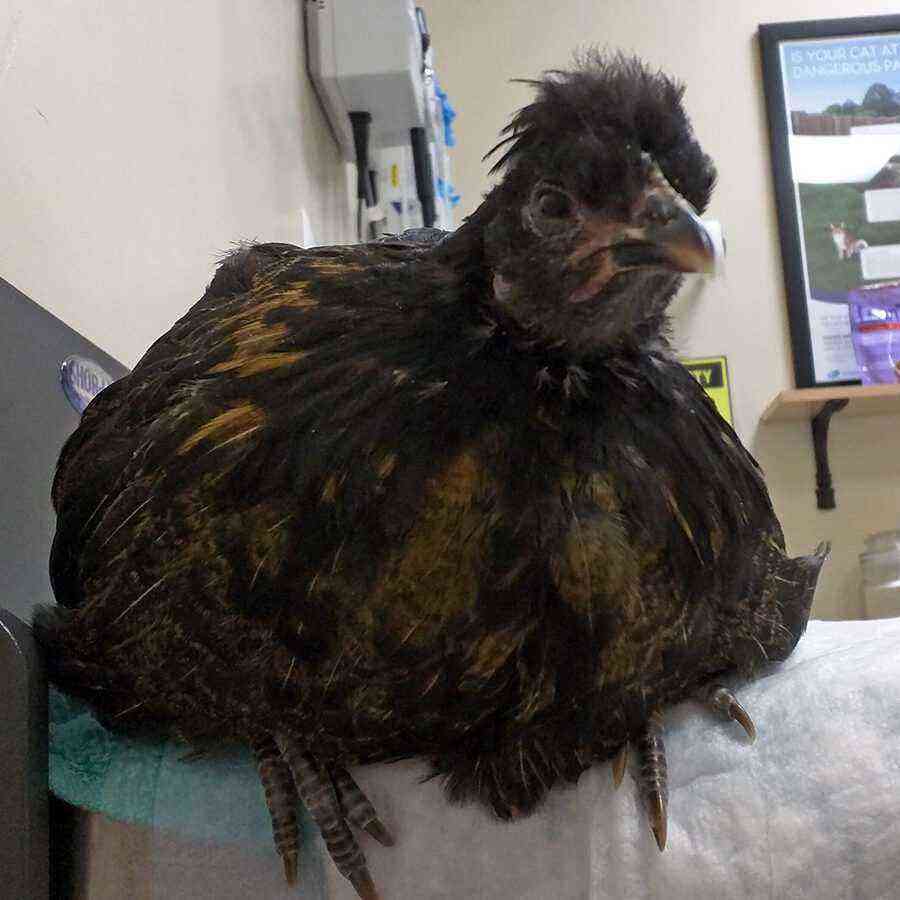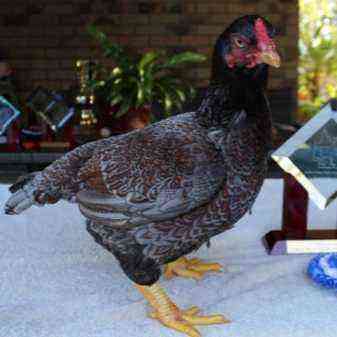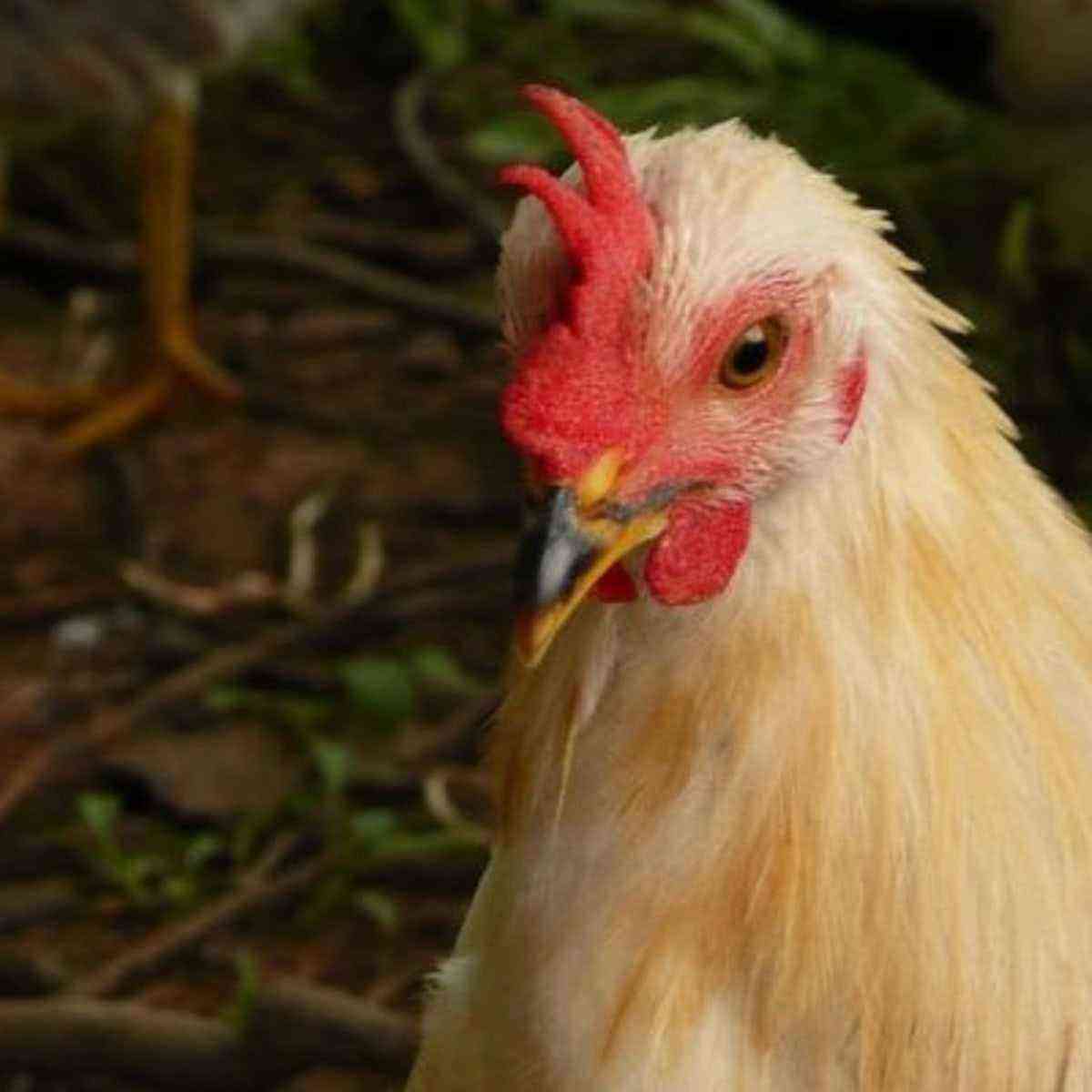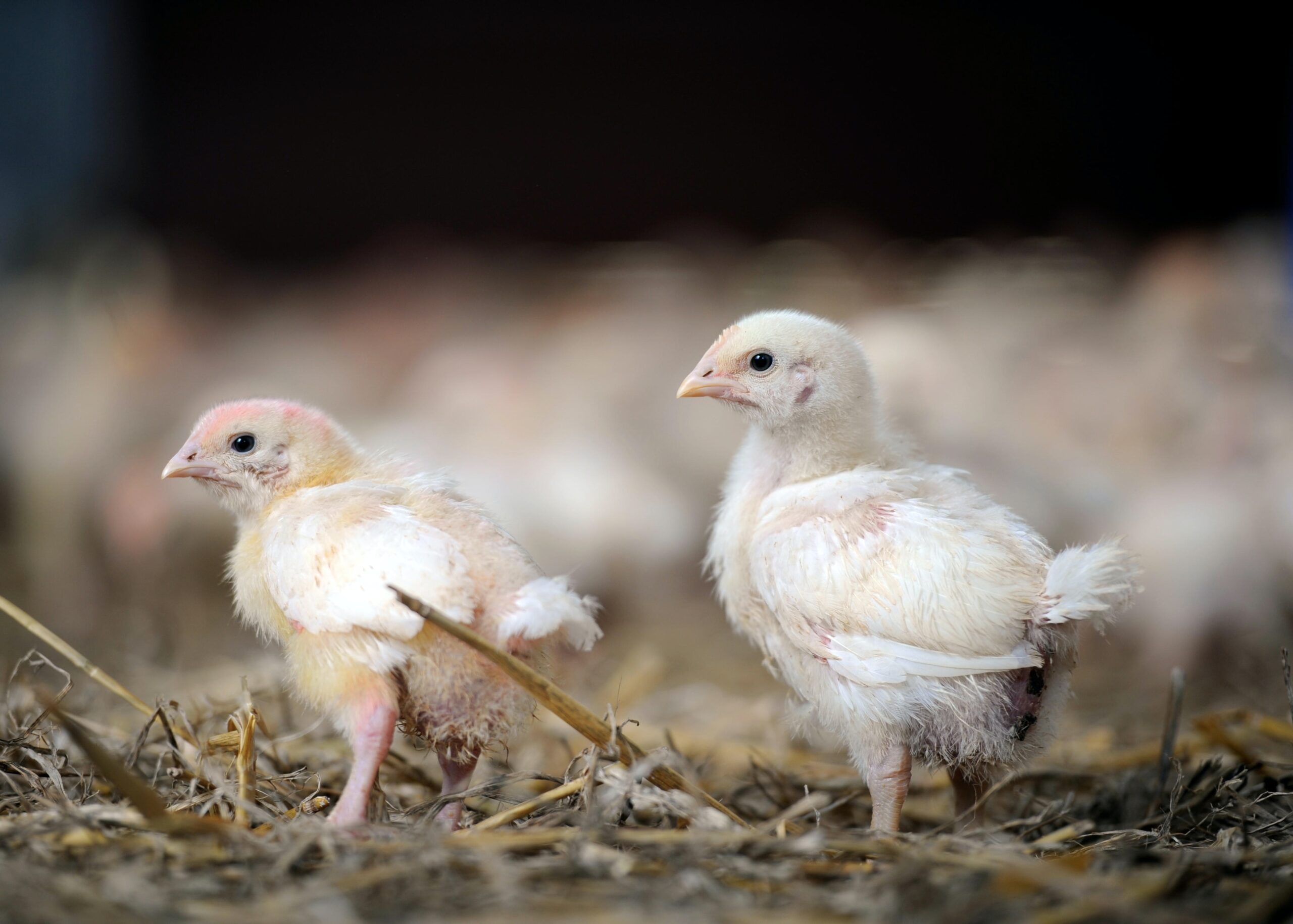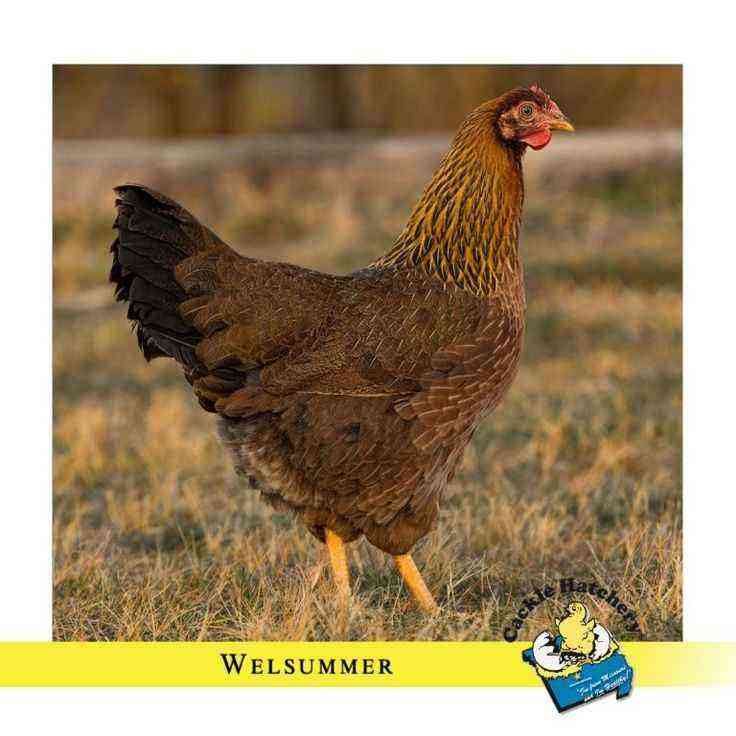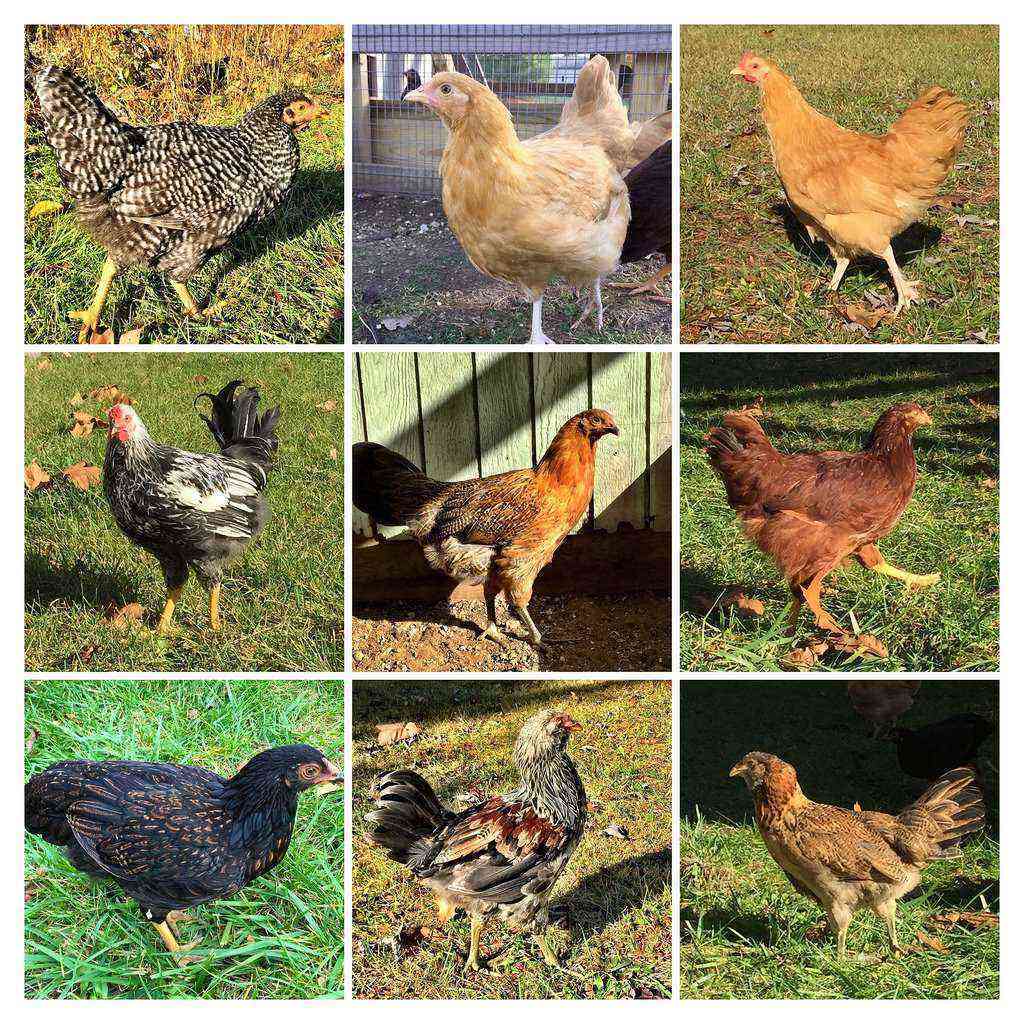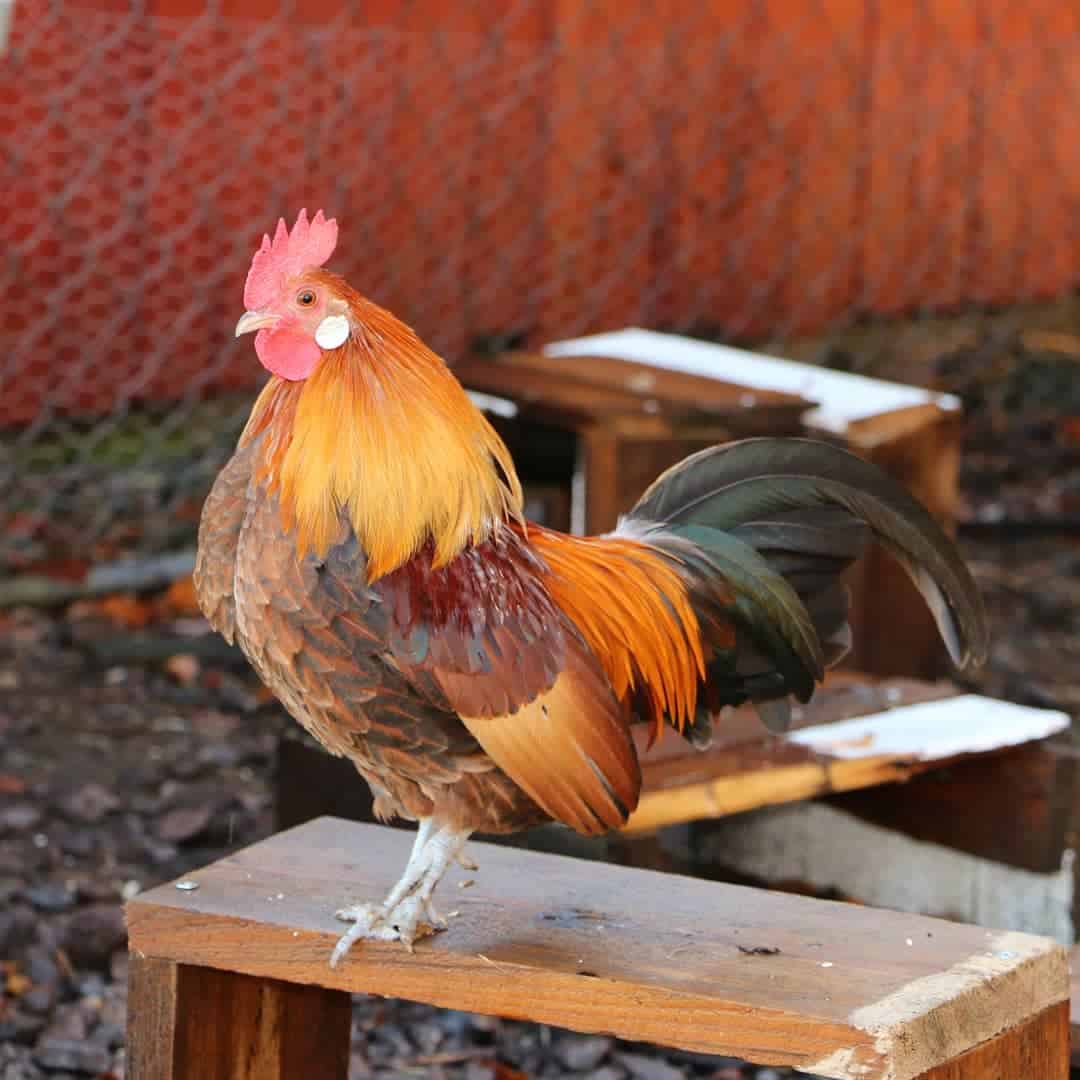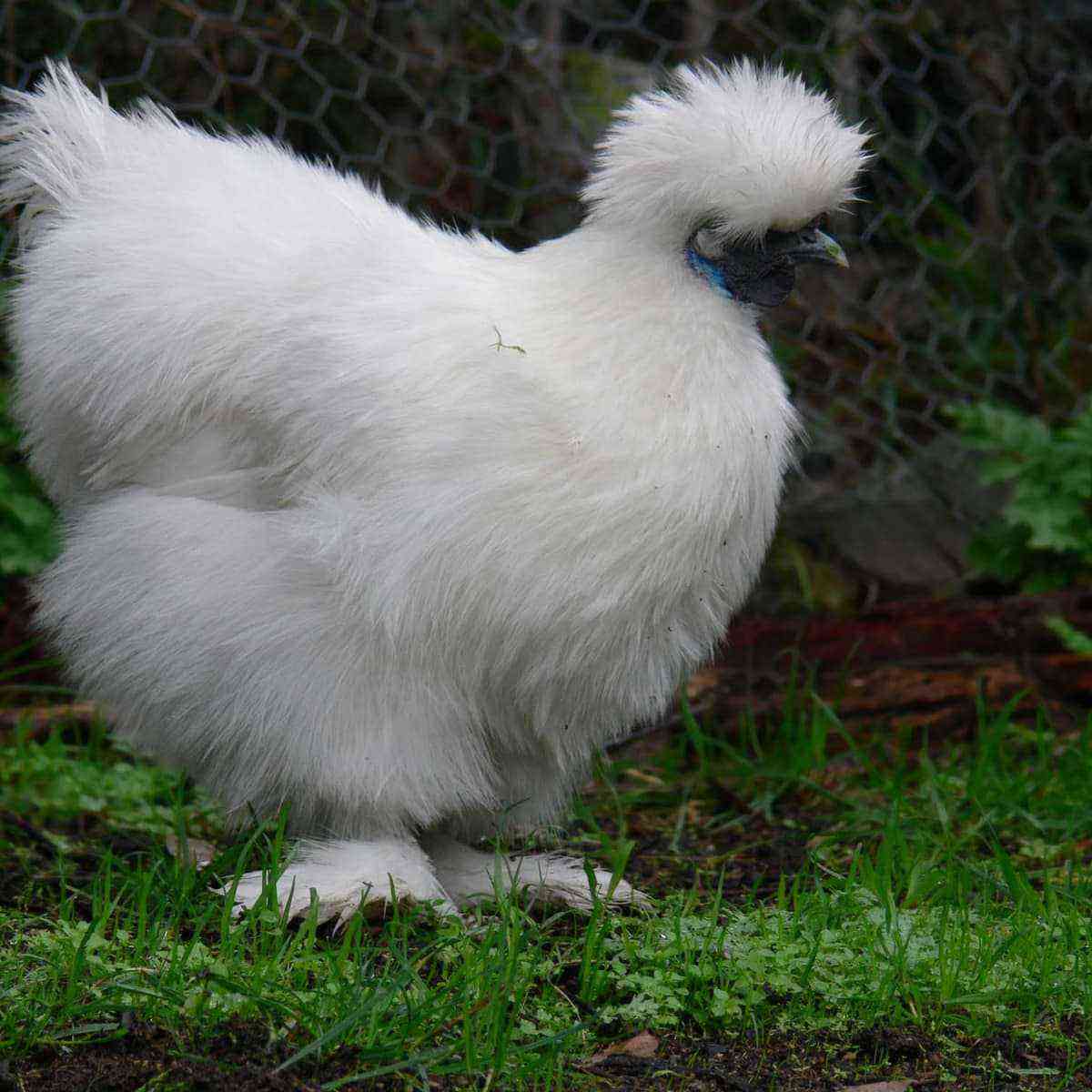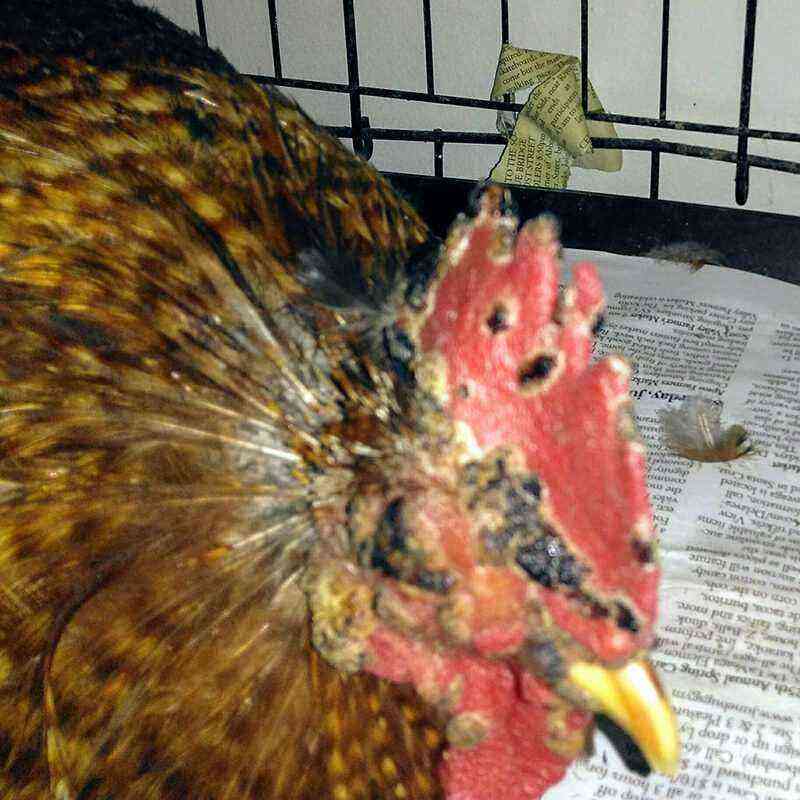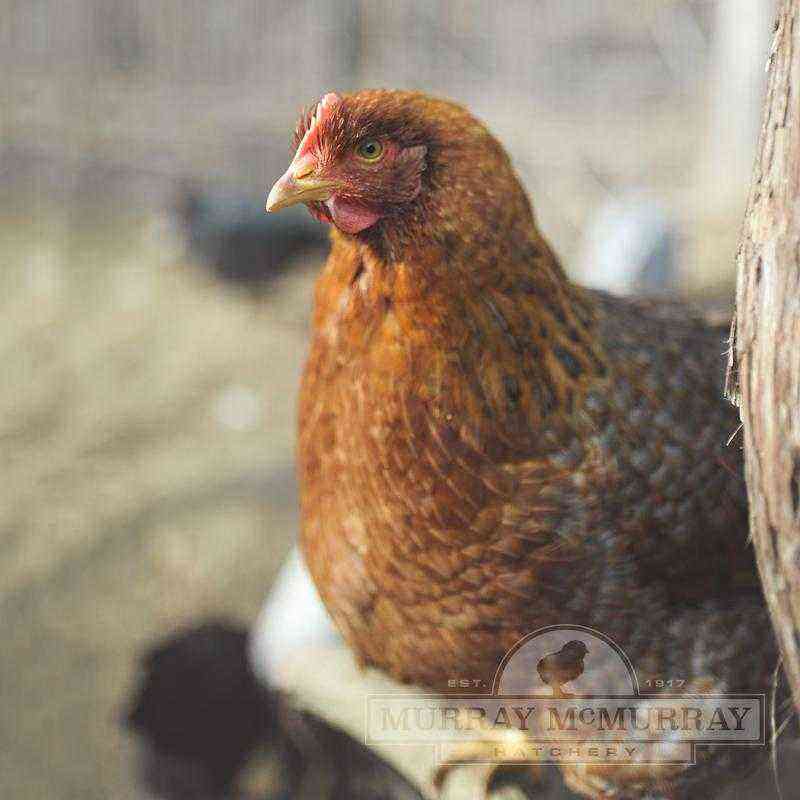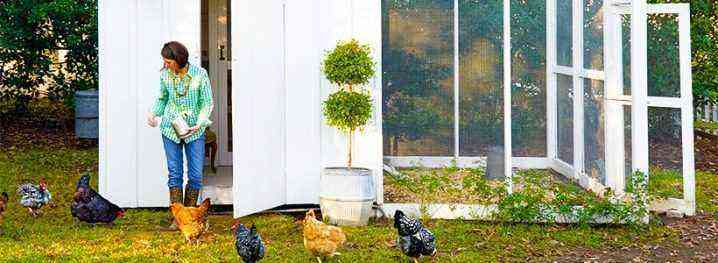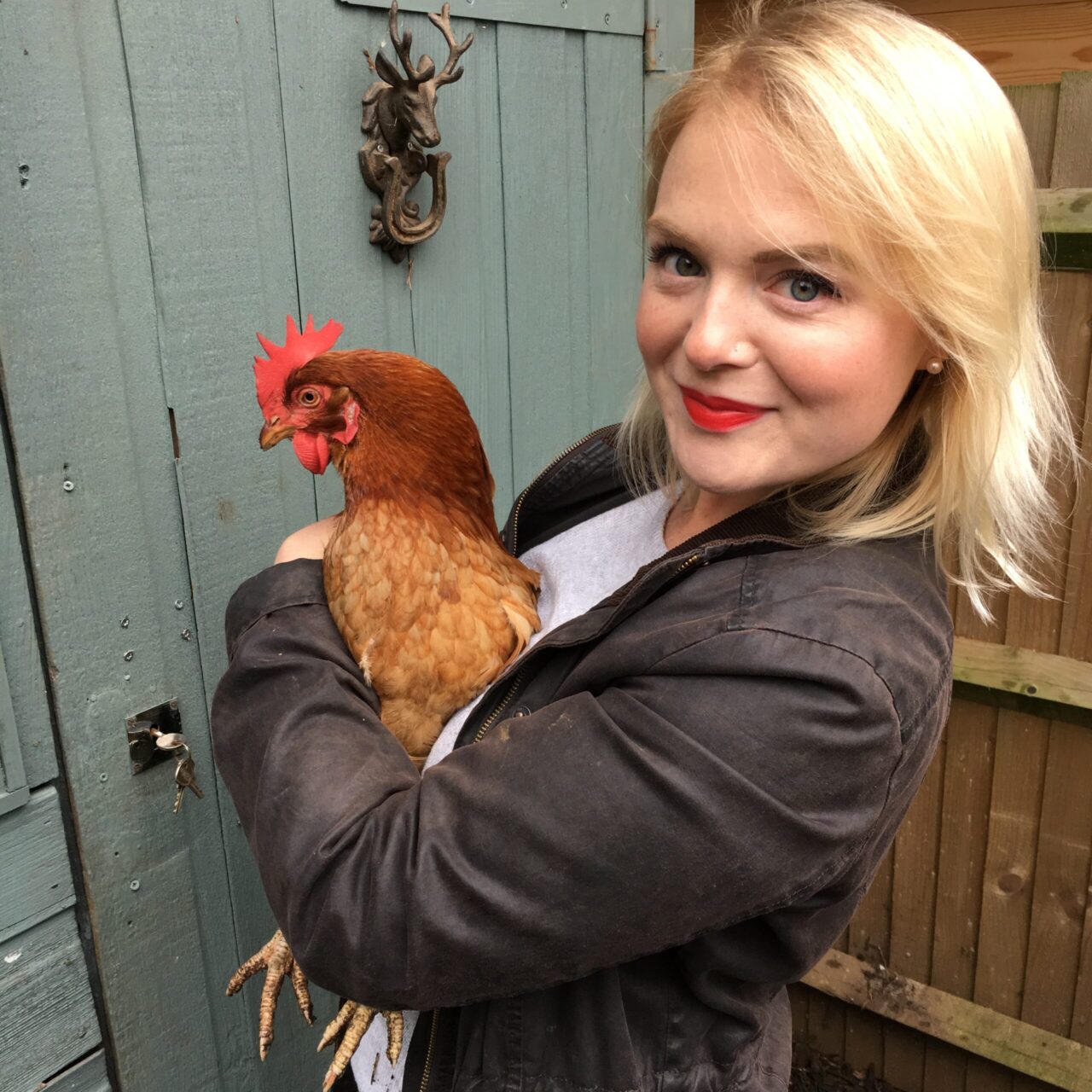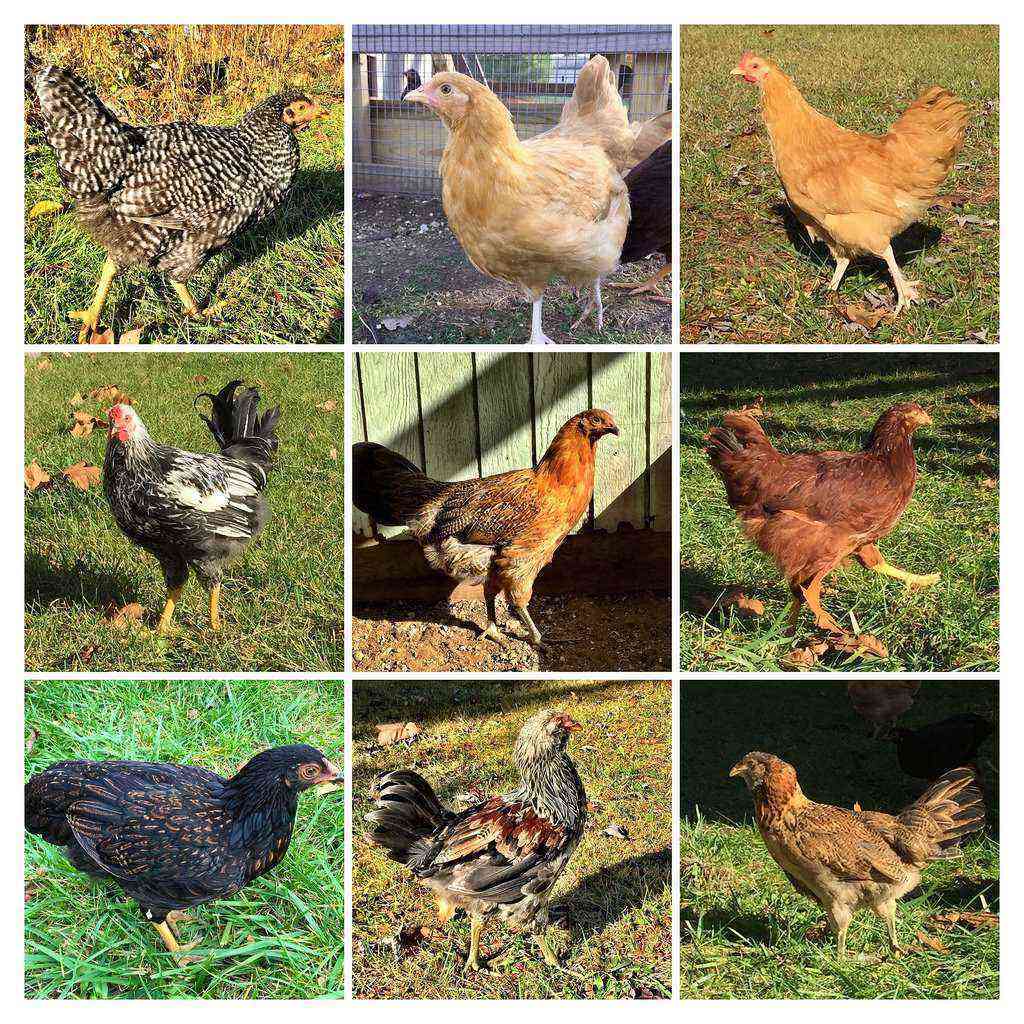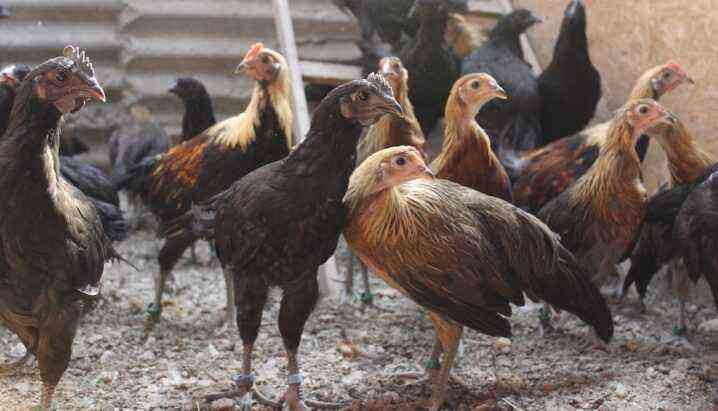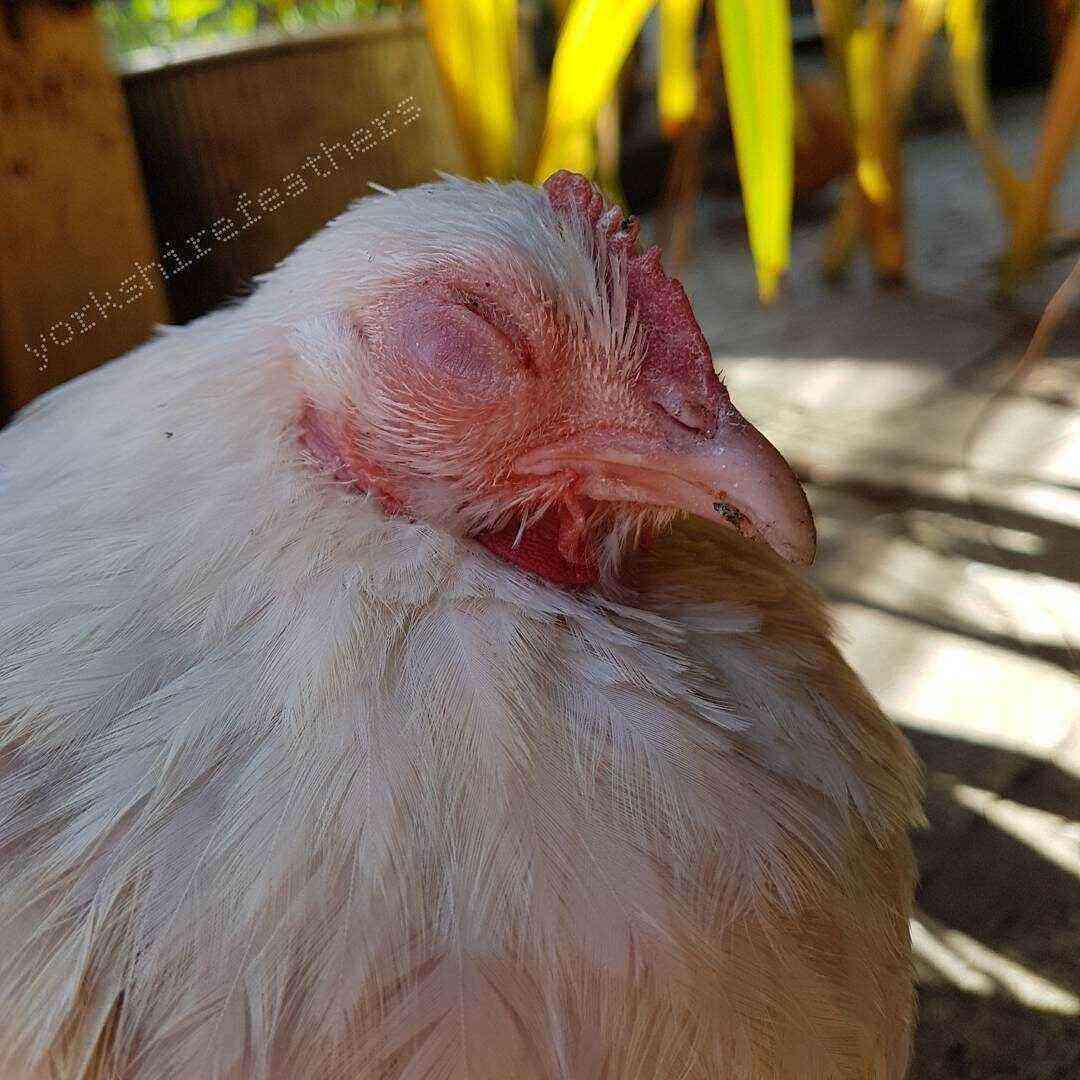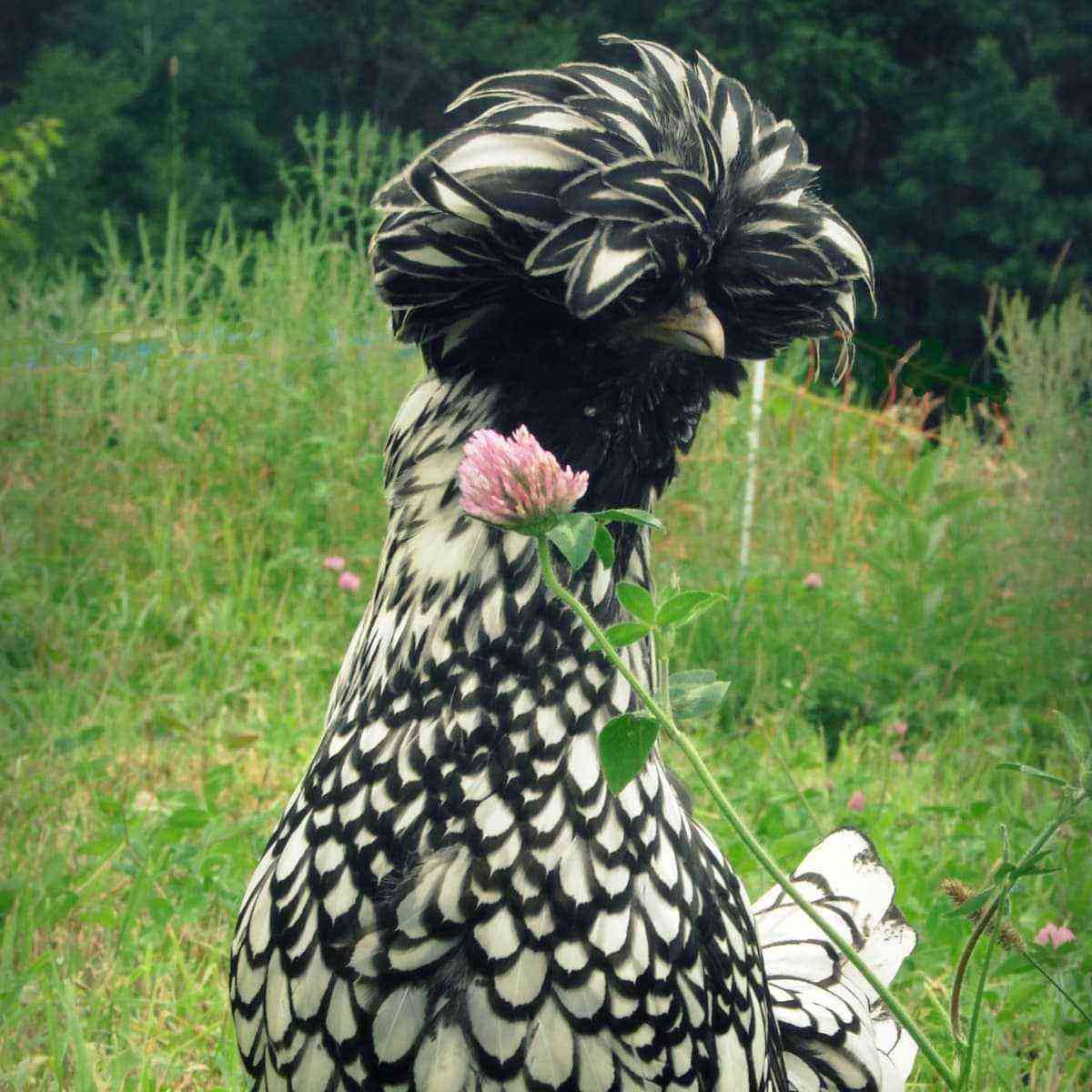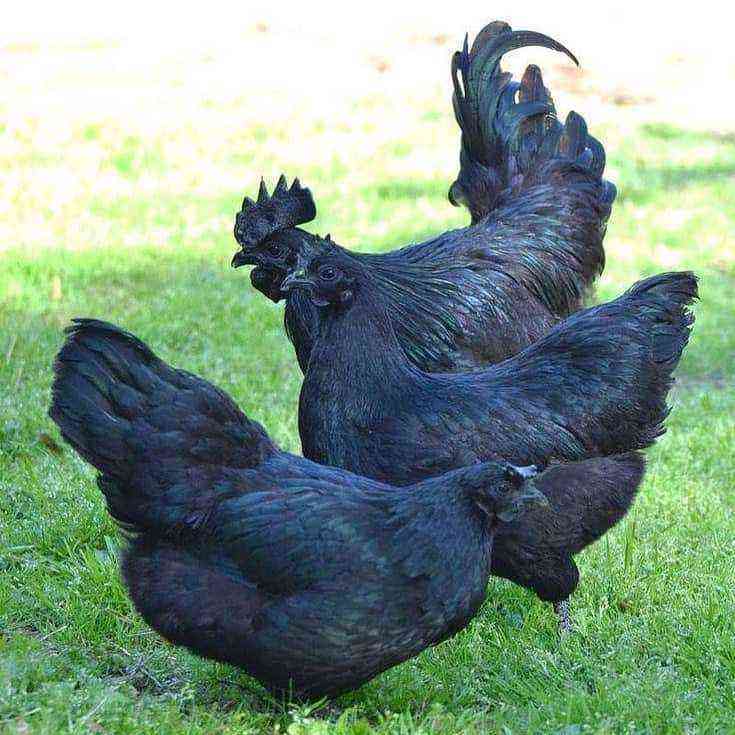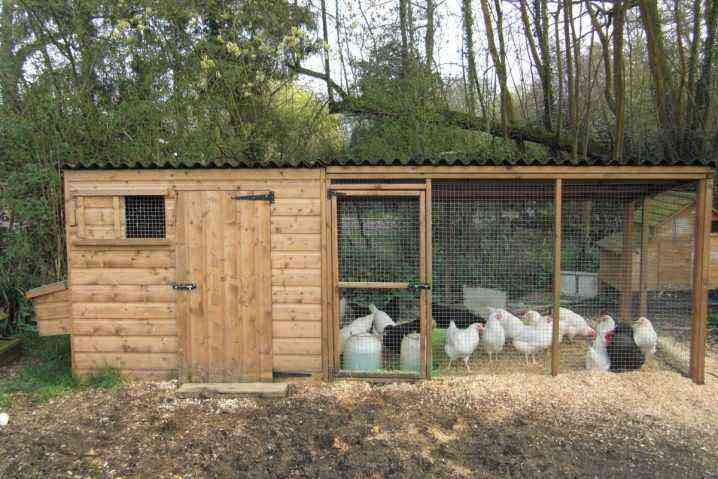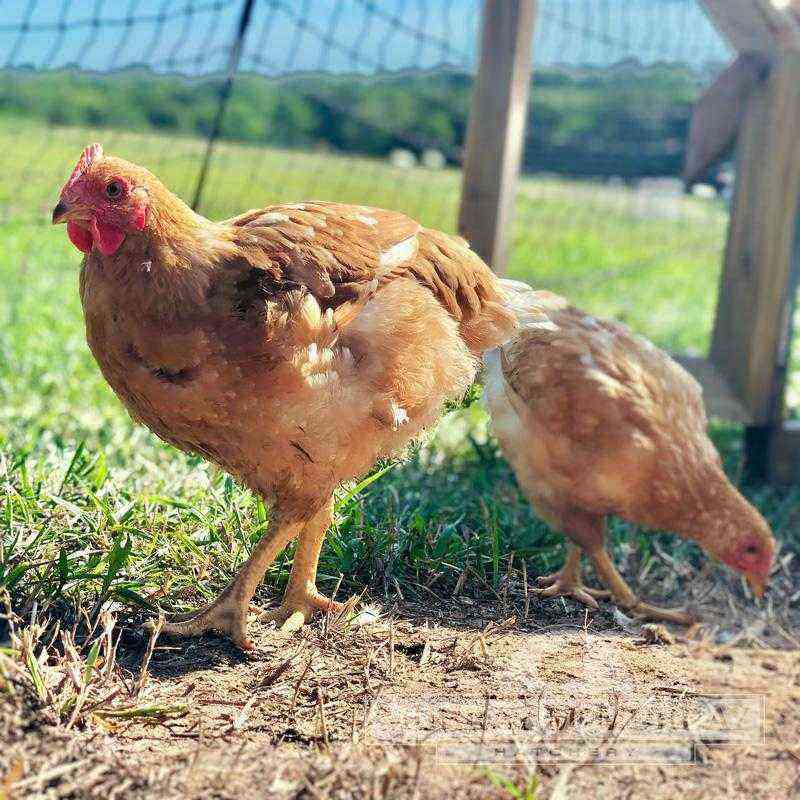For the full growth and development of chickens, a balanced diet is necessary. It is best to use compound feed for laying hens – you can buy it ready-made or make it yourself. Consider the main issues related to the composition and characteristics of the preparation of such food.
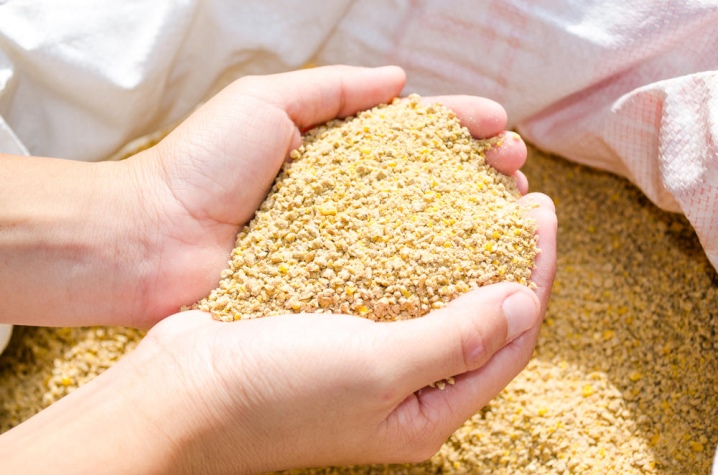
Composition according to GOST
Many novice poultry farmers consider feed prices too high and refuse to use such a product on an ongoing basis. However, as soon as they try to switch to such a diet, all their doubts immediately disappear.
Modern ready-made compound feeds have the following undeniable advantages:
- save breeder time;
- strengthen the immunity of birds;
- improve the quality and meat;
- increase egg production;
- have a positive effect on egg quality.
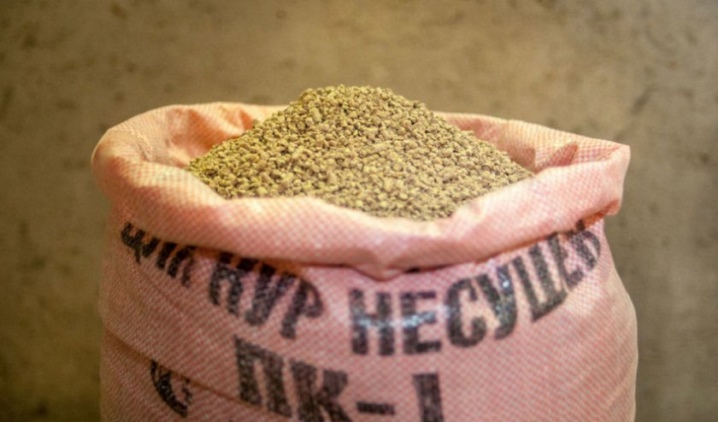
Moreover, in the long term, the use of compound feeds is more profitable than feeding “natural food”, since traditional grain and herbal mixtures often deteriorate during storage, mold appears in them, fungi form – such products are dangerous for the animal, lead to serious pathologies and even death. . Compound feeds do not have this drawback, so the birds grow stronger, healthier and more resilient.
The composition of compound feed according to GOST includes all the substances necessary to maintain normal life – proteins, vitamins, micro- and macroelements. Let us dwell in more detail on the composition of feed mixtures.

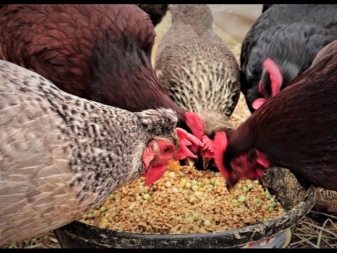
Cereals
It is worth considering the main cultures in more detail.
- Corn – this is one of the most useful and nutritious components, which contains much less fiber than other cereals. For example, in corn it is 6 times less than in oats. At the same time, corn is the absolute leader in terms of protein content among all cereals.
- Oat – this product is given to animals only after the complete removal of the films, and each age has its own fraction size. Most often, oatmeal is introduced into compound feed, it must first be sifted to separate the shells. Oats are considered a dietary product, they contain quite a lot of amino acids, but at the same time, their fiber content is high, so these ingredients are present in mixed fodders in small volumes. Its share is no more than 20% of the total mass of feed. The fact is that fiber is dangerous for animals – in the body of chickens it is digested too slowly and causes blockage of the intestines, which is becoming a common cause among birds.
- Wheat. Feed wheat is introduced into compound feed. It contains a large supply of vitamins of group B, as well as E. Usually the share of this cereal in the mixture does not exceed 30%.
- Rye. It is better not to buy compound feed with such a cereal, experienced poultry farmers believe that rye contains a lot of mucus, which has an adverse effect on the digestive system of birds.
- Barley. This cereal is introduced into the compound feed exclusively in a purified and sifted form, since the cereal shell contains quite a lot of fiber.
- Buckwheat. This product is not often used in chicken nutrition, it is not suitable for providing the bird with all the necessary micro and macro elements. In addition, chickens eat it with great reluctance.
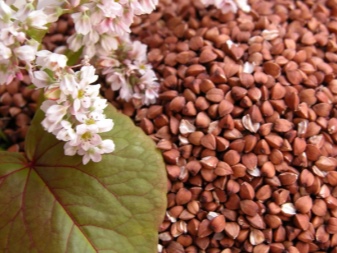
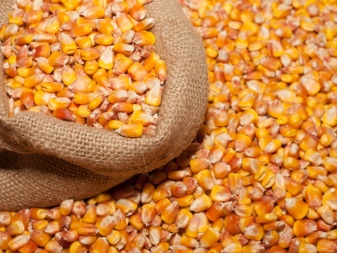
Juicy forages
This group of components contains vegetable additives.
- Potatoes – a product very useful for the digestion of birds. Usually it is introduced into compound feed after boiling, dehydration and crushing. The use of a green root crop is not allowed, since it contains the poison solanine, and it is also not recommended to offer the birds a raw product.
- Beetroot. It has a high utility for the body of chickens. Fresh or boiled beets are introduced into the composition of the mixtures. Usually its share is about 15%.
- Pumpkin It is a rich source of B vitamins, as well as carotene and sugar.
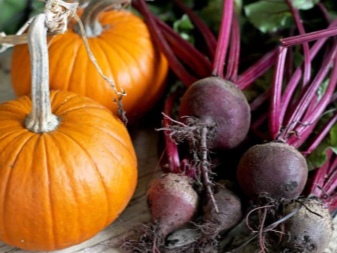
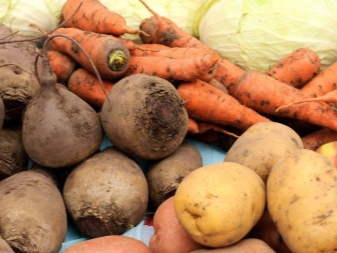
Grain waste
In the preparation of feed, waste from the processing of cereals is used infrequently, but nevertheless, some mixtures contain this ingredient. The most common are food bran. They increase the total mass of feed. However, this supplement has no nutritional value.Moreover, bran contains phosphorus, fiber and often fungi. Such a product does not have any effect on the weight of the birds or on their health.
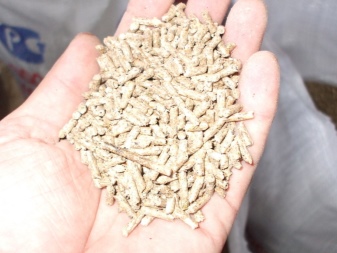
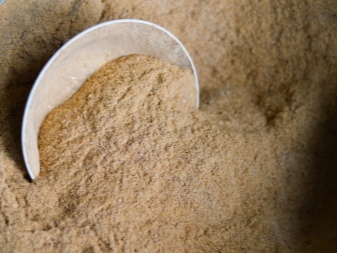
Protein components
Protein intake contributes to weight gain in laying hens. In addition, in birds that consume proteins, the qualitative composition of eggs improves. Depending on the source, two types of proteins are distinguished – vegetable and animal. Animal proteins contain much more vitamins and minerals than vegetable proteins.
The most common animal protein sources include:
- fish flour – it is produced by grinding unfit for food fish; the protein contained in it is perfectly absorbed by the body of chickens due to the high content of amino acids, as a rule, this product is used in the manufacture of wet mash;
- bone flour – this is the second most popular source of protein, it is obtained as a result of the processing of meat and bone products; the protein content in them is approximately the same as in cereals, in addition, vitamins A and E are included;
- blood meal – the raw materials for this component are bones and blood; the component is rich in proteins and amino acids, but at high concentrations it causes indigestion, so the share in the total mass of the feed should not exceed 5%;
- feather flour – obtained from bird fluff and feathers, the product is quite cheap, but absolutely useless; as a rule, it is introduced into the lowest quality feed;
- dairy – protein components that are well absorbed by the bird’s body are usually used in the form of cottage cheese or whey in wet mash; such a product helps to increase egg production and fertility of laying hens;
- earthworms – Usually farmers include them in the composition of feed mixtures as a powerful protein supplement.
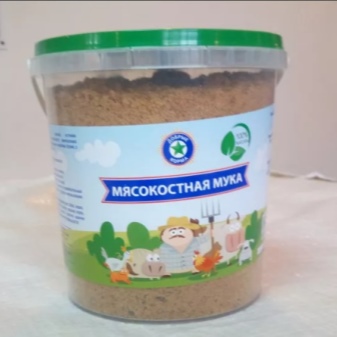
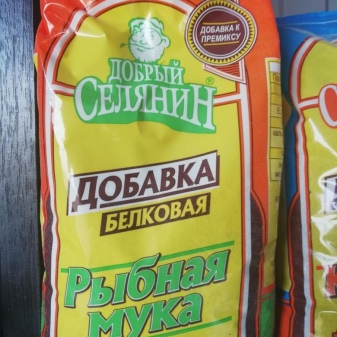
Plant sources of protein include:
- peas – contains a lot of amino acids and proteins, but chickens do not like the smell of this legume, so it is added to the feed in small concentrations;
- soy – in terms of the content of proteins, vitamins and amino acids, soy is in no way inferior to protein products of animal origin;
- cake and meal – usually use soybean and sunflower.
The compound feed also includes vegetable fats, yeast bacteria, limestone, prebiotics, antibacterial drugs, tribal inhibitors.
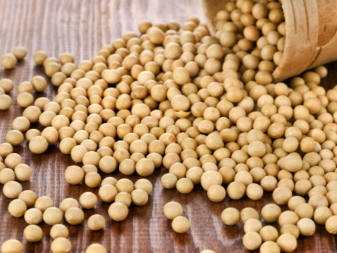
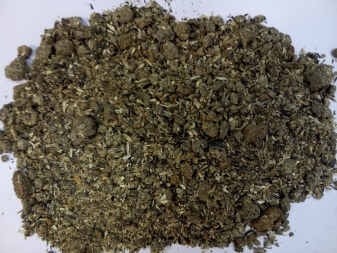
Types
Compound feed is a mixed type of food mixtures that are used to provide farm birds with complete nutrition in accordance with their age, level of development and the need for biological components.
Compound feeds are of several types.
- Loose. These feeds contain more fine-grained components and dust. According to sanitary and hygienic standards, they are considered less favorable, expanded for weeks.
- Expanded Feeds are nutritional mixtures that are obtained by short-term heat treatment under high and strong pressure.
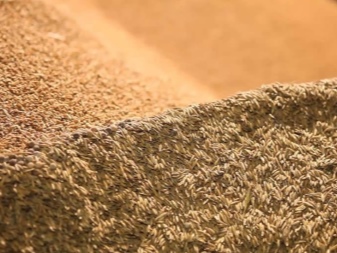

This method has the following advantages:
- a large volume of liquid components is introduced into the body along with the oil;
- exposure to heat contributes to the neutralization of pathogenic microflora;
- manufacturing feature contributes to better digestibility of feed by birds;
- granules have an optimal structure.

The price is also important. Such compound feed, as a rule, uses cheap raw materials, and therefore the final cost of the product is low. In the process of exposure to high temperatures, the contamination of feed with microbes is significantly reduced, while microorganisms such as salmonella, E. coli, and mold fungi are completely neutralized.
The use of such feeds can significantly reduce the incidence and mortality of birds, increase fertility and egg production, and reduce the cost of keeping birds.
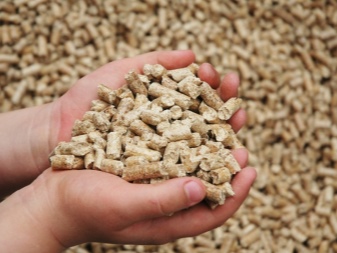

Manufacturers Overview
Unfortunately, not all manufacturers of compound feed for chickens monitor the quality of the products offered. Moreover, some companies deliberately make it absolutely useless, replacing all the necessary amino acids and protein with synthetic analogues. Such feeds lead to underweight birds and affect their digestion in the most unfavorable way. Most poultry farmers prefer Russian-made feed. In the popularity rating there are products of such feed mills as Altai, Aleisky, Istra, Kursk, Gatchinsky, as well as Shuisky and some others.
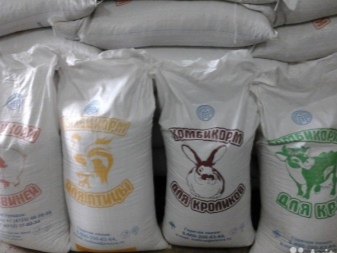
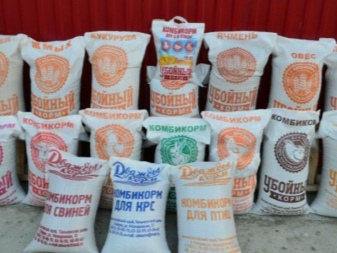
A very popular brand among breeders is Purina.. Most of the compositions of this manufacturer are produced in the form of granules, their content fully complies with the current requirements of GOST. Purina feed contains all the necessary micro and macro elements that affect the full growth and development of birds. This food contains lines for chicks – this compound feed is an easily digestible product, thanks to which the chicks quickly gain weight, grow strong and strong.
Feed for birds is represented by products of the highest quality and contributes to greater egg production of laying hens, as well as an increase in the productivity of chickens of meat breeds. Purina feed can be given as a meal on its own or mixed with vegetable ingredients. The main components of the mixture are the following:
- wheat / corn;
- cake;
- animal proteins;
- vegetable fats;
- lime;
- a piece of chalk;
- probiotic;
- amino acids;
- vitamin and mineral complex.

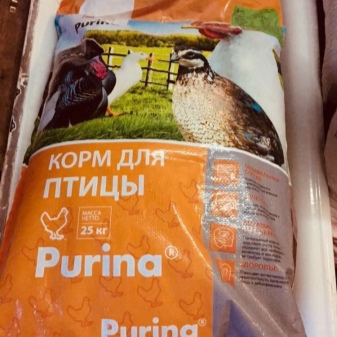
This is an approximate composition, because it can vary depending on the age of the birds for which it is purchased. So, for chicks younger than 14 weeks use products of the Starter line. For feeding chickens aged from 15 to 30 weeks, Grover compound feed is optimal, for older adults – Finish Eco.
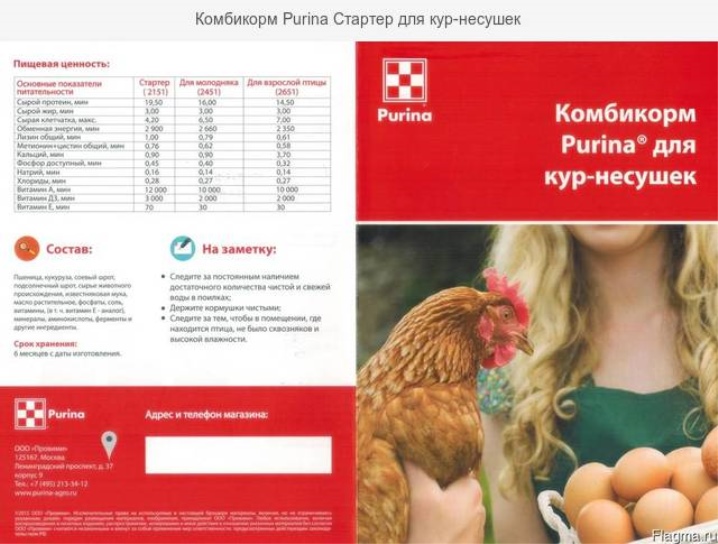
Another popular product is compound feed brand “Solnyshko”. It is used for birds of all ages, and it can be given to birds from birth. The high-quality composition and granular form of the mixture ensures the full assimilation of food by chickens. The composition includes minerals and vitamins. Such compound feed can be fed to birds without additives, or it can be introduced into the mix.
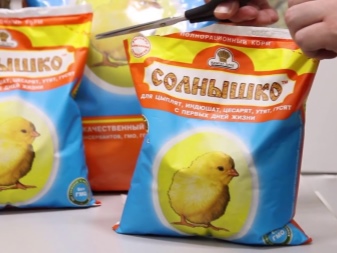
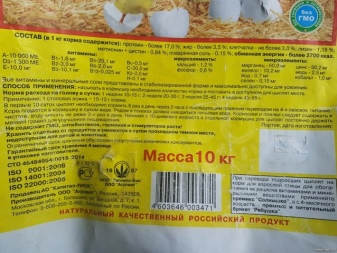
How to choose?
When choosing feed for your laying hens, first of all, you should pay attention to its composition – it must provide good nutrition, be balanced and healthy.
When choosing a suitable composition, you should pay attention to its labeling.
- PC-1 subdivided into 2 subspecies:
- PK-1-1 is sold for feeding chickens aged 20 to 43 weeks, is made in the form of grains of slightly coarser grinding than DK-52, is characterized by a high content of calcium, enriched with vitamins; the composition stimulates the laying of laying hens and makes the eggs more nutritious and strong;
- PK-1-3 is a balanced feed for chickens older than 45 weeks, produced in granulated form, has a balanced composition, can be used without any other additives.
- PC-2. This compound feed is created for young chickens under 7 weeks old, produced in the form of finely ground cereals and contains all useful microelements in an easily digestible form.
- PC-3. This mixture is optimal for young chickens. It contributes to the proper formation of the reproductive system, has a balanced composition, is prepared in the form of medium-sized cereals and is used for birds of 8-20 weeks.
- PC-4. As a rule, it is offered to hens 2-3 weeks before active laying of eggs. It consists of wheat, sunflower cake and fishmeal. These three components account for 85%, the remaining 15% are enzymes and various grain processing wastes.
- PC-5. This feed is intended for broiler chickens under 1 month of age. It consists of a set of easily digestible substances that contribute to the fastest possible weight gain.
- PC-6 also used for broiler chickens, but older than 1 month. It contains grains of a larger size, stimulates the build-up of muscle mass with the obligatory consideration of the age-related needs of the bird’s body.
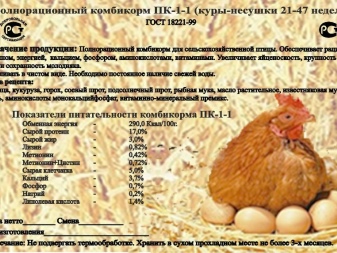
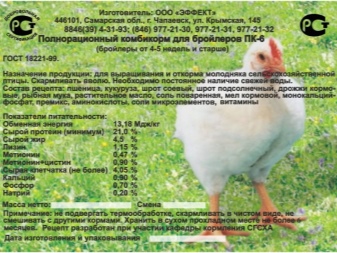
When choosing feed, it is very important to give preference to balanced mixtures. On sale there are many products with a similar composition, but from different manufacturers. In addition, specialized feeds are distinguished – fortified, as well as enriched with proteins and essential amino acids. We recommend that you pay special attention to feeds marked with QC marking.. They are concentrated feed mixtures that cannot be used as a separate product.
Most often, they need to be steamed and added to the composition of the mash; bran, cake, fishmeal and limestone are included in their warehouse.
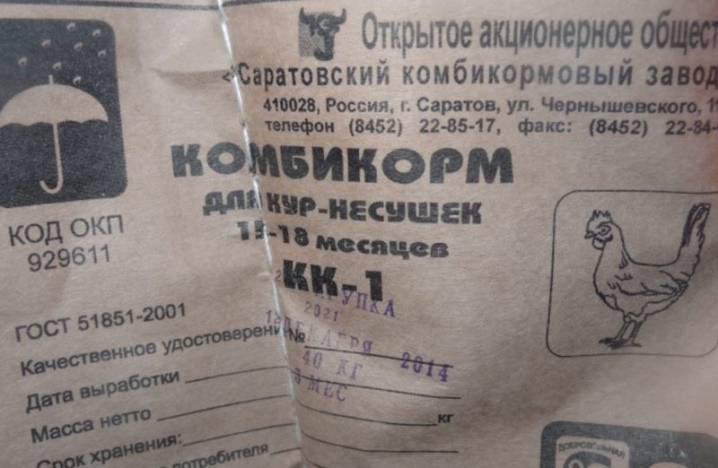
How to feed chickens?
There is no standard for feeding birds established by veterinary services. Usually, farmers adjust the amount of food for chickens based only on their experience. If the chicken eats the food intended for it in less than half an hour, then the proposed volume was clearly not enough, and if after 40 minutes there was a lot of grain left in the feeder, then, on the contrary, an excess amount of the product was given. It is by these indicators that the degree of saturation of birds is usually judged, but this approach is fraught with a shortage of the substances they need, so it is better to use the approximate recommendations of experienced breeders.
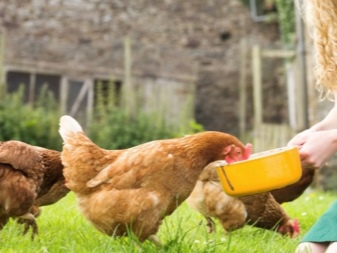
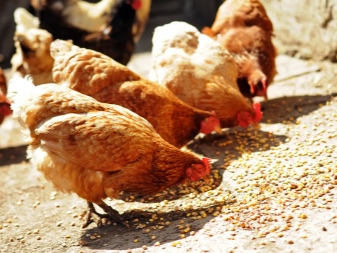
So, the daily intake of birds should be the following amount, depending on the age of the chickens:
- 1–3 months – 10-25 grams;
- 4–8 months – 30-50 grams;
- 9–16 months – 50-70 grams;
- 16–20 months – 70-95 grams;
- 20–30 months – 100-110 grams;
- 30–45 months – 110-125 grams;
- 45–65 months – 120-130 grams.
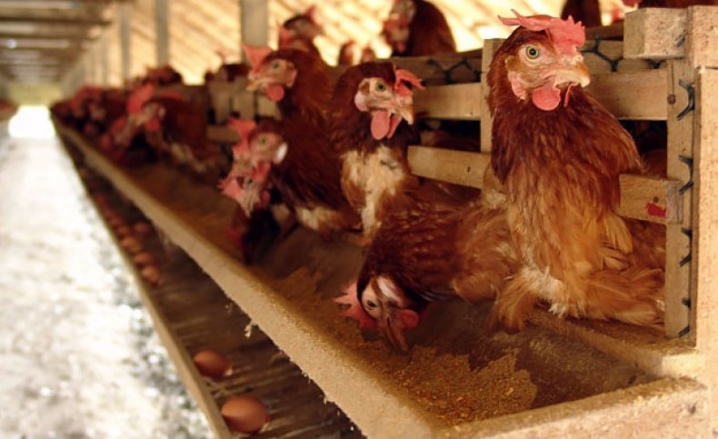
Broiler chickens are usually fed three types of feed:
- from the first day of life and in the next 2 weeks with start food or PC-5;
- for 3-4 weeks, preference should be given to feed “Growth”;
- from the age of one month to slaughter use “Finish”.
The amount of compound feed may vary if the product is introduced as part of the mash. For example, if breeders offer their pets green food, then they give less compound feed, while they certainly monitor the condition of the bird and its egg production.


It is very important to prevent hunger in laying hens, but overfeeding is also dangerous for them, as it leads to a decrease in egg production. The body needs of birds usually change with age. So, young birds are fed once a day, and adult birds are offered food both in the morning and in the evening.
If you are feeding your birds dry food, be sure to provide them with enough water.
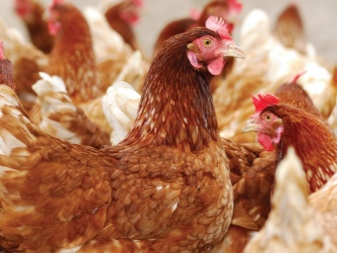
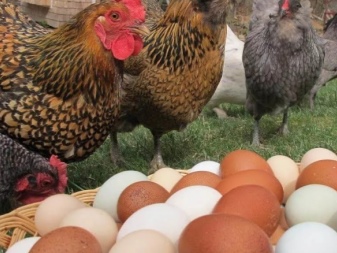
How to make compound feed with your own hands?
Many breeders prefer to make compound feed at home on their own, because in this case it is possible to control the quality of the ingredients, follow the recommended proportions and ensure the maximum usefulness of the product offered to the birds.
The composition of homemade feed usually includes the following components:
- alfalfa flour contains high doses of proteins and is optimal for feeding in winter;
- corn grain – it is best to leave it whole or coarsely crushed if the mixture is made for chickens;
- peas contain vegetable proteins, used as an alternative to soy;
- wheat;
- oats;
- barley.
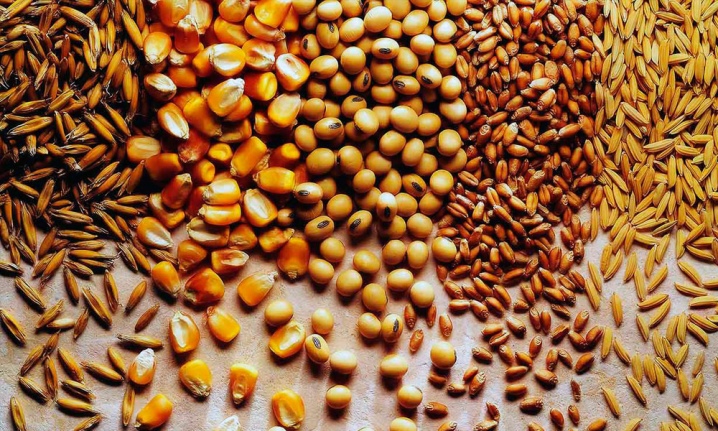
Additionally, the composition of the feed mixture may include such components as:
- fodder limestone or crushed oyster shells – they are added as a source of calcium;
- salt;
- ground gravel;
- probiotics – it is best to use fermented milk products or sauerkraut;
- crab or fish meal – contains all the necessary proteins;
- flaxseed – is a source of fat-soluble acids;
- kelp – contains the entire set of essential minerals;
- Yeast is a valuable source of vitamin B and digestive enzymes.
It will be useful to include germinated grains in the compound feed.
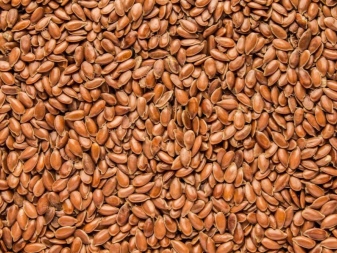
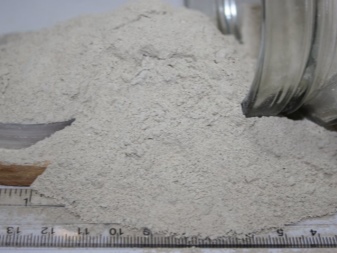
How to make compound feed for laying hens with your own hands, see the video.

